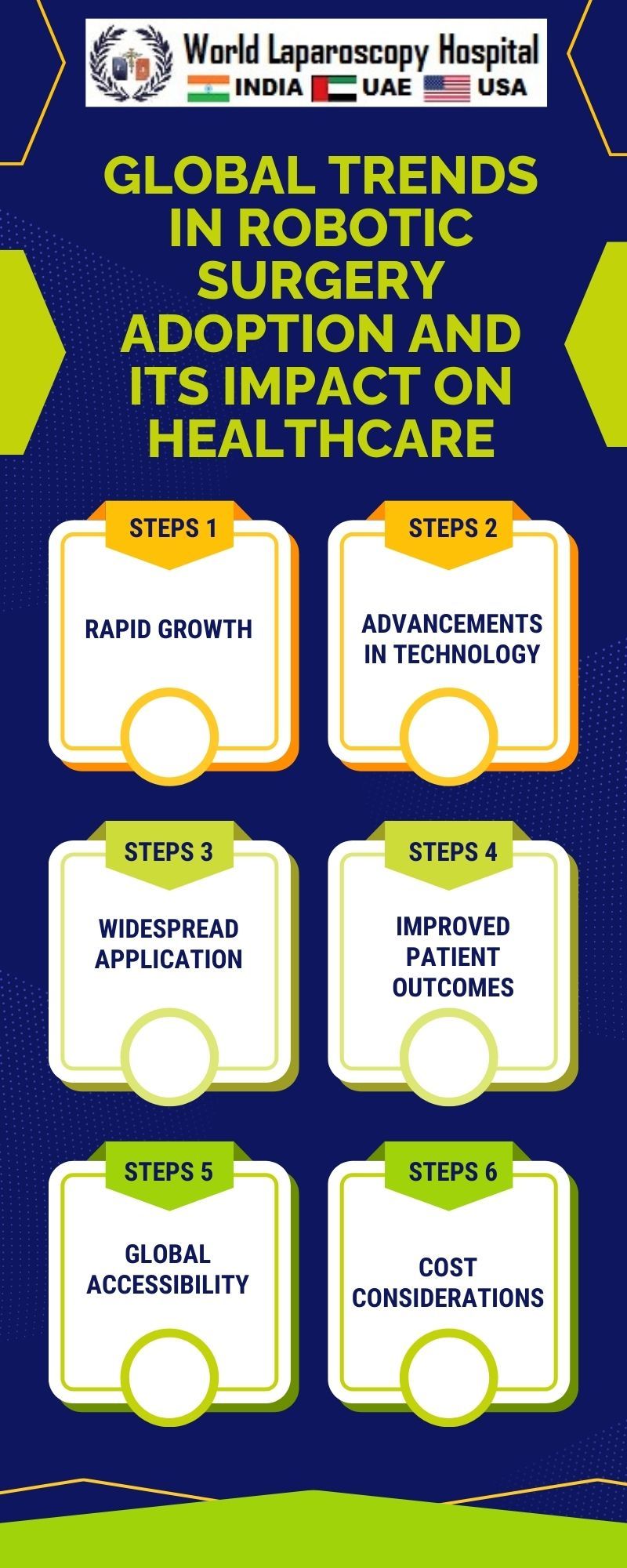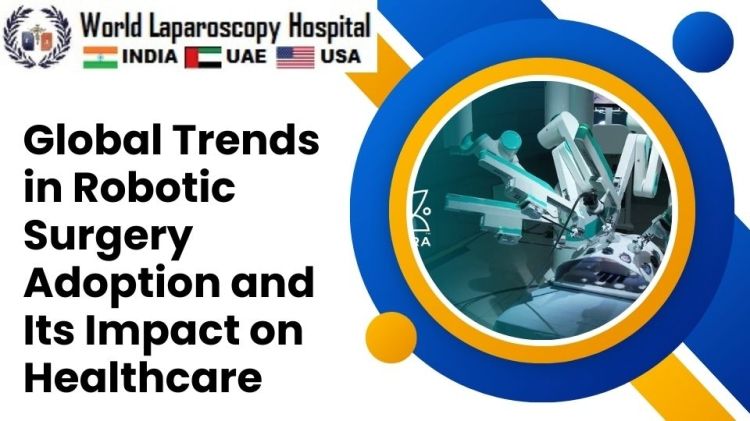Global Trends in Robotic Surgery Adoption and Its Impact on Healthcare
Introduction:
Robotic surgery has emerged as a groundbreaking technological advancement in the field of healthcare, reshaping traditional surgical practices worldwide. The integration of robotic systems into surgical procedures has witnessed a significant surge in adoption, revolutionizing the way surgeries are performed and experienced. This article delves into the global trends in robotic surgery adoption, exploring its multifaceted impact on healthcare, patient outcomes, and the future of surgical innovation.

The Evolution of Robotic Surgery:
Historical Perspective:
Robotic surgery has roots dating back to the mid-20th century, with early experiments and developments in telemanipulation. The da Vinci Surgical System, introduced in the early 2000s, marked a pivotal moment, providing surgeons with a robotic-assisted platform for enhanced precision and control during minimally invasive procedures.
Technological Advancements:
Over the years, significant strides in technology have propelled robotic surgery forward. Improvements in artificial intelligence, machine learning, and haptic feedback systems have elevated the capabilities of robotic surgical platforms. The integration of 3D visualization and advanced imaging technologies has further enhanced the surgeon's ability to navigate complex anatomical structures.
Global Adoption of Robotic Surgery:
Regional Disparities:
The adoption of robotic surgery exhibits regional variations, influenced by factors such as healthcare infrastructure, regulatory frameworks, and economic considerations. Developed nations tend to lead in adoption rates, with North America and Europe at the forefront. However, emerging economies in Asia and Latin America are increasingly embracing robotic surgical technology.
Specialty-Specific Adoption:
Various medical specialties have embraced robotic surgery differently. While urology and gynecology have been early adopters, other fields like cardiothoracic surgery, colorectal surgery, and orthopedics are witnessing a gradual integration of robotic-assisted procedures. The versatility of robotic systems allows for adaptation to diverse surgical disciplines.
Impact on Surgical Practices:
Precision and Control:
One of the primary advantages of robotic surgery is the unparalleled precision and control it offers to surgeons. The robotic arms, controlled by the surgeon from a console, allow for delicate maneuvers with minimal invasiveness. This precision reduces the risk of complications, accelerates recovery, and enhances overall patient safety.
Minimally Invasive Procedures:
Robotic surgery enables a shift towards minimally invasive procedures, with smaller incisions and reduced trauma to surrounding tissues. This not only leads to faster recovery times but also lowers the risk of infection and postoperative complications. Patients often experience less pain and scarring, contributing to an improved surgical experience.
Enhanced Visualization:
The integration of advanced imaging technologies provides surgeons with high-definition, three-dimensional views of the surgical site. This enhanced visualization allows for better identification of anatomical structures, facilitating more accurate and meticulous procedures. Surgeons can navigate complex and confined spaces with greater confidence.
IV. Patient Outcomes and Experiences:
Improved Surgical Outcomes:
Robotic surgery has demonstrated positive impacts on patient outcomes across various medical disciplines. Studies indicate reduced blood loss, lower rates of complications, and shorter hospital stays compared to traditional open surgeries. The enhanced precision of robotic systems contributes to improved surgical success rates.
Quality of Life:
Patients undergoing robotic-assisted procedures often report a higher quality of life during the recovery period. Reduced pain, faster return to daily activities, and improved cosmetic outcomes contribute to a more positive postoperative experience. This patient-centric approach aligns with the evolving expectations of healthcare consumers.
Accessibility and Affordability:
While the cost of acquiring and maintaining robotic surgical systems initially posed challenges, advancements in technology and increased adoption have led to economies of scale. As costs decrease, the accessibility of robotic surgery is expanding, making this innovative approach more attainable for a broader range of healthcare institutions.
Challenges and Ethical Considerations:
Cost and Resource Allocation:
The initial capital investment and ongoing maintenance costs associated with robotic surgical systems can be a barrier for some healthcare institutions, particularly in resource-constrained settings. Striking a balance between the potential benefits and financial considerations remains a challenge.
Surgeon Training and Learning Curve:
The proficiency of surgeons in utilizing robotic systems is crucial for successful outcomes. Adequate training and overcoming the learning curve are essential aspects that demand attention. Institutions need to invest in comprehensive training programs to ensure surgeons can harness the full potential of robotic technology.
Ethical and Legal Implications:
The increasing reliance on robotics in surgery raises ethical and legal considerations. Questions regarding accountability in the event of system malfunctions or errors, patient consent, and the potential dehumanization of the patient-surgeon relationship require thoughtful examination. Regulatory frameworks must evolve to address these emerging ethical challenges.
Future Directions and Innovations:
Integration of Artificial Intelligence:
The incorporation of artificial intelligence (AI) into robotic surgery holds immense potential for further enhancing decision-making and procedural outcomes. AI algorithms can assist surgeons in real-time, offering insights based on vast datasets and improving the adaptability of robotic systems to individual patient characteristics.
Telesurgery and Remote Assistance:
Advancements in communication technologies may pave the way for telesurgery, allowing surgeons to perform procedures remotely. Additionally, remote assistance and collaboration among surgeons from different locations can facilitate knowledge-sharing and expand the reach of expertise in complex cases.
Customization and Personalization:
The future of robotic surgery may involve greater customization and personalization, tailoring procedures to the specific needs and characteristics of individual patients. This patient-centered approach could optimize outcomes and further minimize the invasiveness of surgical interventions.
Conclusion:
Robotic surgery has emerged as a transformative force in the realm of healthcare, with its global adoption reshaping traditional surgical practices. The profound impact on patient outcomes, the shift towards minimally invasive procedures, and ongoing technological advancements underscore the significance of this paradigm shift. As challenges are addressed and innovations continue to unfold, the trajectory of robotic surgery is poised to redefine the future landscape of healthcare, offering unprecedented possibilities for improved surgical precision, patient experiences, and overall healthcare outcomes.






